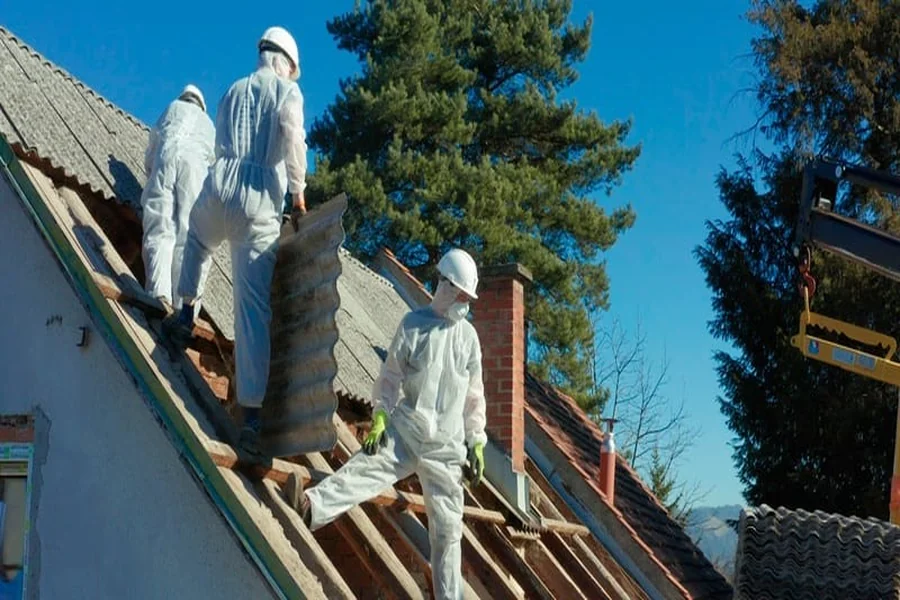Ensuring Safety: The Essential Guide to Asbestos Roof Removal
Asbestos has long been associated with a variety of serious health risks, including lung cancer and mesothelioma. Its use in construction materials was extensive throughout the 20th century, particularly in roofing products due to its durability and resistance to heat. However, with the dangers that asbestos poses, the process of its removal, particularly from roofs, is a task that requires strict adherence to safety protocols and expert handling. This guide aims to shed light on the imperative steps and considerations involved in safe asbestos roof removal.
Understanding Asbestos Risks
Before delving into the removal process, it is critical to understand the risks. Asbestos consists of microscopic fibres that can become airborne and inhaled, leading to severe respiratory issues over time. This is why the discovery of asbestos in any part of a building, especially the roof, necessitates immediate action.
Identifying Asbestos in Your Roof
The first step in asbestos remediation is identification. Often, it is difficult to determine whether a material contains asbestos just by looking at it. If your property dates back to a time when asbestos was commonly used, it’s crucial to have a professional assessment. Certified asbestos inspectors can collect samples for laboratory testing, which is the only definitive way to confirm the presence of asbestos.
The Significance of Professional Asbestos Removal Services
Once asbestos is identified, the removal process should be assigned to professionals. The significant health risks associated with the incorrect handling of asbestos cannot be overstated, and as such, this is not a DIY task. Professional asbestos removal teams are equipped with the proper tools, protective clothing, and respirators, as well as the expertise to safely remove asbestos-containing materials.
Preparation for Asbestos Roof Removal
Effective preparation is key to a successful asbestos roof removal. Surrounding areas must be sealed off, and warning signs should be posted to ensure no unauthorised persons enter the site. The removal area must be kept wet to minimise dust and fibre release into the air.
Removal and Disposal Procedures
The actual removal of an asbestos-containing roof involves carefully detaching the materials to minimise breakage and the release of asbestos fibres. These materials are then securely bagged and transported to authorised disposal facilities. Strict regulations govern the disposal of asbestos waste to prevent contamination of public areas or water sources.
Air Monitoring During Asbestos Removal
Continuous air monitoring during asbestos roof removal is critical. This ensures that airborne fibre levels are kept within safe limits, not just for workers but also for the surrounding environment.
Decontamination After Removal
Post-removal, decontamination of the site and of the workers is another critical step. Workers must follow decontamination protocols before leaving the removal site to prevent the spread of any residual asbestos fibres.
Final Inspection and Clearance Testing
After asbestos removal, a final inspection and clearance testing by a third-party should be conducted to ensure that all asbestos materials have been properly removed and that the site is safe for subsequent work or habitation.
Choosing a Reputable Asbestos Removal Contractor
Selecting an experienced and reliable contractor for asbestos roof removal is essential. A reputable contractor will have a strong record of compliance with health and safety regulations, proper licensing, and positive client testimonials.
Importance of Training and Accreditation
Professionals undertaking the task of asbestos removal must have proper training and accreditation. This ensures that they are up to date with current legislation, safety standards and effective removal techniques.
Insurance and Liability
Ensure that the chosen contractor has adequate insurance to cover the scope of the work, including potential liability for any issues arising from the asbestos removal process.
Cost Considerations
While cost is an inevitable consideration in asbestos roof removal, it should not be the sole determining factor. The priority must be the safe and effective handling and disposal of asbestos. Sometimes, lower quotes can be indicative of shortcuts that compromise safety and legal requirements.
Legal Compliance and Documentation
A thorough documentation process throughout the asbestos removal stages is crucial for legal compliance. This documentation serves as a record of the materials removed and the safety measures taken.
Long-term Health and Safety
The goal of asbestos roof removal is not just the elimination of immediate risks but also the long-term assurance of health and safety for building occupants and the surrounding community.
Conclusion
Asbestos roof removal is a complex and hazardous process that demands high levels of expertise, care, and regulatory adherence. It is imperative for property owners to approach the issue with the gravity it deserves. By engaging professionals for asbestos roof removal, ensuring stringent safety measures are followed, and prioritising long-term health and environmental safety, the risks associated with asbestos can be effectively mitigated.
As the awareness around asbestos dangers grows, so does the need for due diligence in its removal. Adequate measures must be taken at every stage to protect not just those directly involved in the removal process, but also the wider community. The legacy of asbestos is a lingering one, but through conscientious efforts and professional expertise, we can move towards a safer future, free from the risks that this hazardous material poses.







